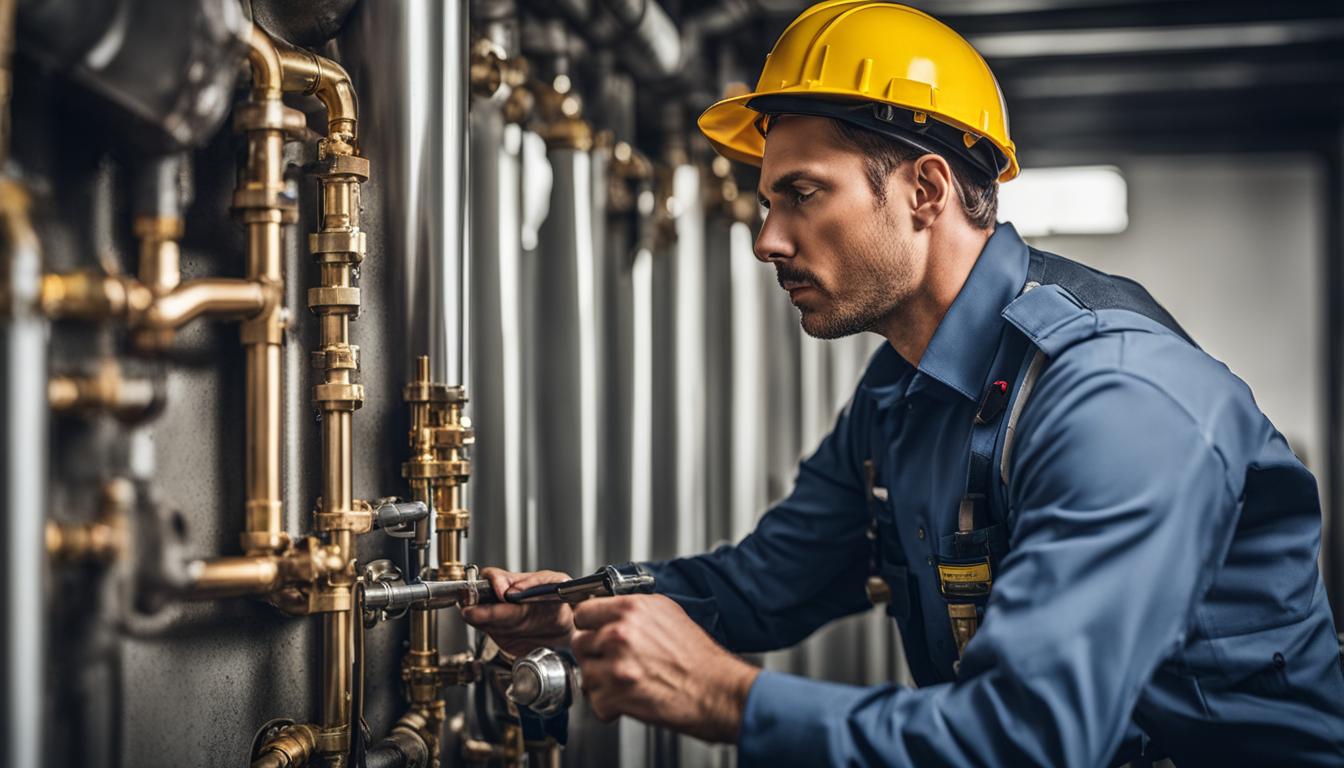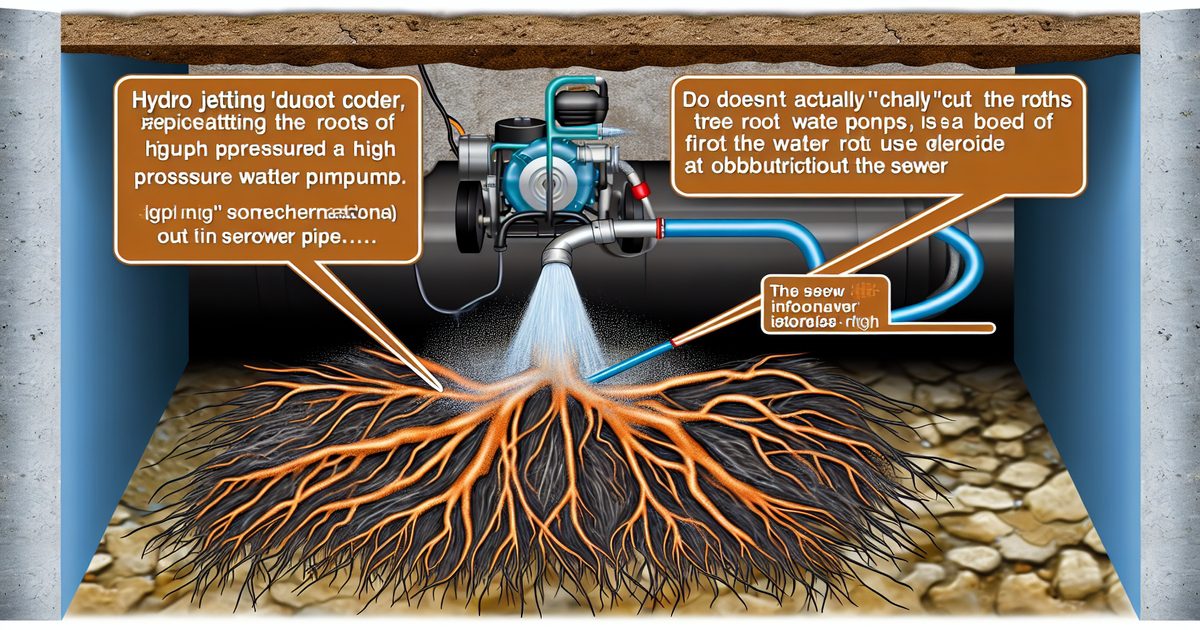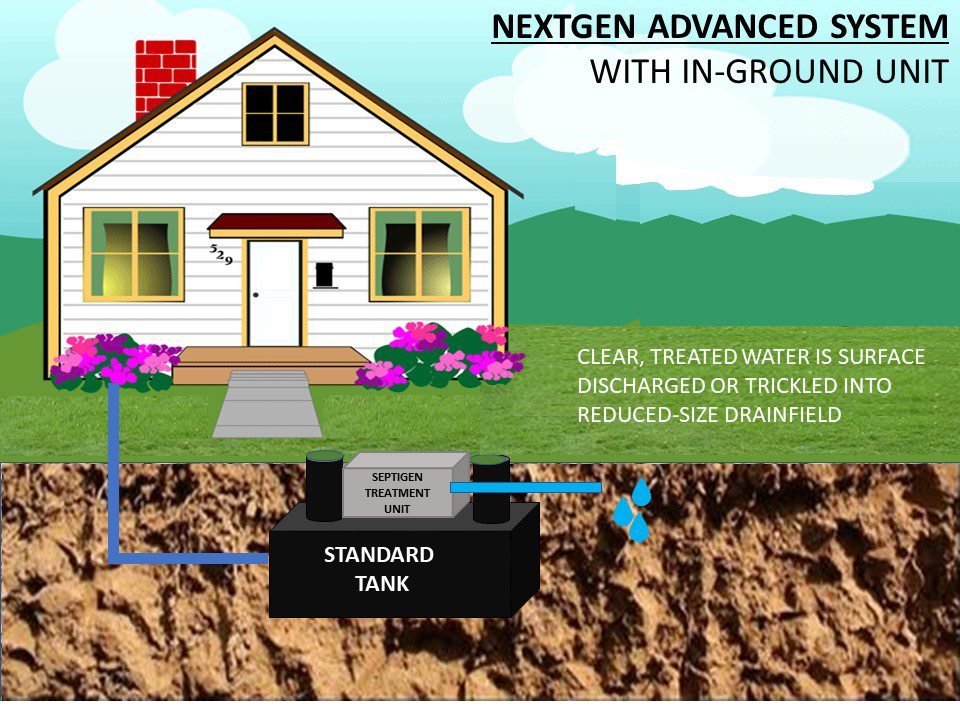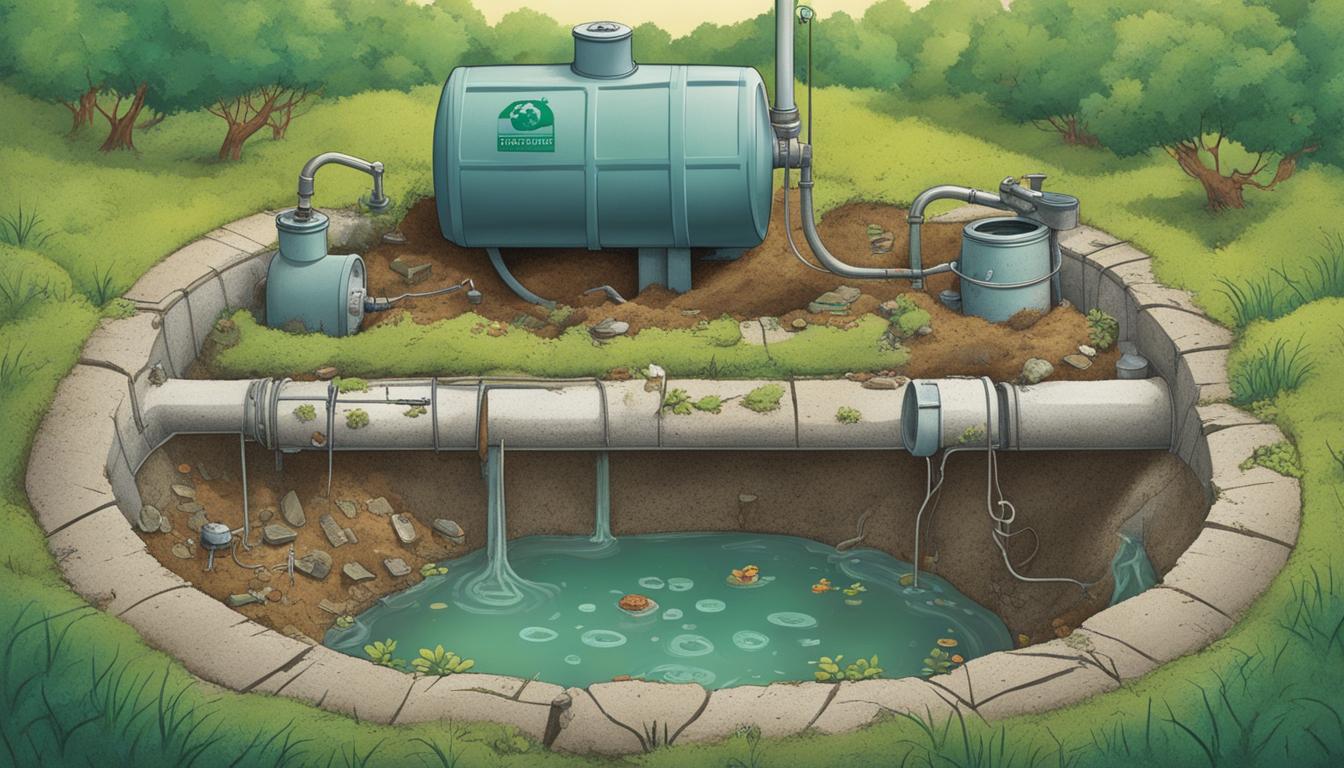Ever wondered how to tackle stubborn clogs and debris in your sewer lines without the hassle of digging? Mastering the art of using a sewer jetter might just be the game-changer you need. From understanding its components to employing effective techniques, this guide will equip you with everything necessary to wield this powerful plumbing tool like a pro. Whether you’re a seasoned DIY enthusiast or a novice homeowner looking to save on costly professional services, learning how to use a sewer jetter can empower you to take control of your plumbing maintenance. Let’s dive into the world of high-pressure water jetting and unleash its potential for clearing drains and sewers.
Key Takeaways
- Safety First: Prioritize safety measures when using a sewer jetter to prevent accidents and injuries. Always wear protective gear and follow proper operating procedures.
- Regular Maintenance is Key: Keep your sewer jetter in top condition by performing regular maintenance and troubleshooting to ensure its effectiveness and longevity.
- DIY Hydro Jetting Tips: Implement effective DIY hydro jetting tips for routine maintenance and minor blockages, saving time and money on professional services.
- Effective Cleaning Strategies: Utilize advanced hydro jetting techniques for efficient and thorough cleaning of sewer lines, ensuring optimal performance and longevity.
- Preparation is Crucial: Properly prepare for hydro jetting by understanding the equipment and the process, which is essential for successful and effective operation.
- Take Action: Apply the insights gained from understanding sewer jetters, operating techniques, and maintenance to keep your sewer lines clean and functional.
Understanding Sewer Jetters
Hydro Jetting Equipment
A sewer jetter is an effective tool for cleaning pipes, both in commercial and residential settings. It utilizes high-pressure water to remove debris and buildup from sewer lines. This method is especially useful for tackling stubborn clogs that traditional snaking methods might struggle with.
The high-pressure water stream generated by the pump, hose, and nozzle components of the sewer jetter is capable of breaking down clogs and obstructions within the pipes effectively. This makes it an indispensable piece of equipment for anyone dealing with problematic drainage systems.
Components and Functions
The essential components of a sewer jetter include the pump, hose, and nozzle. The pump generates the necessary pressure while the hose, made from durable yet flexible material, delivers this high-pressure water stream into the pipes. The nozzle, often equipped with various jets or rotating heads, plays a crucial role in directing the pressurized water to efficiently clean out debris.
By understanding how these components work together to produce high-pressure water flow, users can operate their sewer jetters more effectively in clearing blockages within their plumbing systems.
Hose Requirements
When selecting a hose for your sewer jetter, it’s important to choose a durable yet flexible material that can withstand high pressures without compromising its maneuverability. Ensuring that it has proper length is crucial for reaching deep into sewer lines where blockages may occur. Lastly, compatibility with specific types of jetting equipment must be considered when choosing a suitable hose for your needs.
Water Supply Considerations
For successful operation of a sewer jetter, having sufficient volume and pressure of clean water is imperative during usage.
Preparing for Hydro Jetting
Inspection with Cameras
When preparing to use a sewer jetter, start by inspecting the pipes with cameras. This step is crucial for identifying any blockages and assessing the condition of the pipes. By doing so, you can locate potential problem areas within the sewer system. This inspection ensures that the hydro jetting process will be effective in thoroughly cleaning the pipes.
Inspecting with cameras allows you to visually assess the interior of the pipes, which helps in determining whether there are any major obstructions or damages that could impede the hydro jetting process.
Access Point Identification
After inspecting with cameras, it’s essential to identify access points to your sewer system. Locating these entry points enables you to assess how accessible they are for using jetting equipment and also helps in determining the best approach for cleaning.
Identifying access points ensures that you have a clear understanding of where your equipment needs to be positioned and provides insight into any potential challenges related to accessing specific areas of your sewer system.
Selecting Nozzles
Finally, when preparing for hydro jetting, it’s important to select appropriate nozzles based on your specific requirements. Different nozzles cater to various applications such as rotating or penetrating nozzle options tailored specifically to certain cleaning needs.
Selecting nozzles plays a significant role in ensuring that you achieve optimal results during hydro jetting by using equipment that aligns with your unique pipe conditions and cleaning objectives.
Safety Measures
Personal Protection
When using a sewer jetter, prioritize personal safety by wearing appropriate gear, such as goggles, gloves, and non-slip footwear. Shield yourself from the high-pressure water spray to prevent injuries. Always be cautious during operation to avoid accidental slips or falls.
To safeguard your pipes during jetting, understand the material limitations of your pipes. Different pipe materials have varying levels of tolerance for high-pressure water. Avoid structural harm by minimizing the risk of damage to your pipes.
Pipe Safety
Monitor the temperature when using a sewer jetter to ensure effectiveness without causing harm. Ideal temperatures range for effective jetting while avoiding extreme hot or cold conditions that could impact performance.
Connecting equipment correctly is crucial for safe and efficient use of a sewer jetter. Ensure all connections are secure before starting the process to prevent leaks or accidents.
Selecting an appropriate pressure level is essential for successful cleaning without causing damage to your pipes. Understanding different pressure settings and their impact on various pipe materials is vital in preventing potential issues.
Operating a Sewer Jetter
Regular maintenance is crucial. This involves inspecting the hoses, nozzles, and fittings for any signs of wear or damage. It’s important to ensure that all connections are secure and leak-free to avoid accidents and maintain optimal performance.
The advantages of hydro jetting over traditional methods are significant when connecting the sewer jetter equipment. Hydro jetting uses high-pressure water to clear out blockages more effectively than traditional snaking methods. This method can remove grease, debris, tree roots, and other obstructions without causing damage to the pipes.
In cases where complex issues arise during the connection process or while using the sewer jetter, seeking professional assistance is recommended. Professional plumbers have the expertise and experience to troubleshoot any problems with the equipment or plumbing system efficiently.
Effective Cleaning Strategies
Nozzle Design Selection
When using a sewer jetter, choosing the right nozzle design is crucial for achieving optimal cleaning results. Different nozzles are designed to tackle specific types of blockages and debris in the sewer line. For instance, a penetrating nozzle with forward jets is ideal for cutting through stubborn obstructions like tree roots. On the other hand, a flushing or thrusting nozzle is more effective at clearing out loose debris and sediment build-up.
It’s essential to consider the condition of the pipes and the nature of the clog when selecting a nozzle design. By understanding which type of nozzle suits different situations, users can maximize their efficiency while minimizing potential damage to the pipes.
Cutting Roots
One common issue in sewer lines is invasive tree roots that penetrate and obstruct the flow within pipes. To address this problem effectively when using a sewer jetter, it’s important to employ specialized nozzles designed specifically for cutting roots. These nozzles typically feature sharp blades or chains that rotate at high pressure to slice through intrusive roots without causing harm to the surrounding pipe walls.
By utilizing these root-cutting nozzles strategically along with proper technique, users can effectively eliminate root intrusions from sewer lines without resorting to costly and invasive excavation methods.
Clearing Blockages
In addition to addressing root intrusions, sewer jetters are also highly effective at clearing blockages caused by grease buildup, scale deposits, and other debris accumulation in pipelines. The forceful stream of water from the jetter helps dislodge these obstructions while simultaneously flushing out loosened particles from inside the pipe.
DIY Hydro Jetting Tips
DIY Considerations
When considering DIY sewer jetting, it’s crucial to prioritize safety. Always wear protective gear, including gloves and goggles, to shield yourself from debris and water splashback. Be mindful of the pressure levels when using a sewer jetter to avoid damaging your plumbing system. It’s essential to thoroughly inspect the pipes before proceeding with hydro jetting. Look out for any signs of damage or weak spots that could worsen under high-pressure water.
Furthermore, familiarize yourself with the equipment and its operation before starting the process. Understanding how to control the water flow and pressure is vital for an effective cleaning process without causing harm.
Using Pressure Washers
One way to utilize a sewer jetter effectively is by attaching it to a pressure washer. This combination can provide sufficient force to dislodge stubborn clogs within your pipes while also washing away accumulated grime and debris. When using a pressure washer as part of your DIY hydro jetting efforts, ensure that you adjust the nozzle appropriately based on the specific requirements of your plumbing system.
Moreover, always start with lower pressure settings and gradually increase if necessary during the cleaning process. This approach helps prevent potential damage caused by excessive force in one go.
Ensuring Effectiveness
To ensure effectiveness when using a sewer jetter for DIY hydro jetting, consider investing in specialized nozzles designed for different types of blockages or pipe materials. For instance, rotary nozzles are ideal for cutting through tree roots or hardened grease buildup, while penetrating nozzles can effectively clear soft blockages such as silt or sludge.
Maintaining steady movements throughout the pipe’s length ensures thorough cleaning without missing any areas prone to obstruction.
Maintenance and Troubleshooting
Addressing Clogs Promptly
It’s essential to act as soon as you notice slow drainage or gurgling sounds. One effective method is using the sewer jetter to clear the blockage. By inserting the jetter into the drain, you can use high-pressure water to break up and flush out debris, grease, or other obstructions.
Regularly inspecting your drains for any signs of clogging is crucial. Once you identify a potential blockage, tackle it immediately with your sewer jetter. This proactive approach helps prevent more severe issues down the line and keeps your plumbing system in top condition.
Verifying Water Source
Verifying water source involves ensuring that your water supply delivers enough pressure for the sewer jetter to work effectively. Before using the equipment, check if there are any restrictions on water flow that could impact its performance. Make sure that your water source provides sufficient volume and pressure for optimal operation.
Keep in mind that some sewer jetters require a minimum flow rate and pressure level to function correctly. If these requirements aren’t met, it may lead to ineffective cleaning or even damage to the equipment.
Checking Hose Size
When checking hose size, ensure that it matches with your sewer jetter’s specifications. Using an incompatible hose size can affect its performance and efficiency during operation.
For instance, if you’re using a smaller diameter hose than recommended by the manufacturer, it might not deliver enough water flow or pressure needed for effective cleaning. On the other hand, using a larger hose than required could result in excessive stress on both the pump and engine of your equipment.
Advanced Hydro Jetting Techniques
Utilizing Toilets for Access
When using a sewer jetter, one advanced technique involves utilizing toilets for access. This method allows the sewer jetter to reach deep into the plumbing system, providing thorough cleaning and clearing of blockages. By removing the toilet and inserting the sewer jetter directly into the pipeline, it becomes easier to navigate through bends and curves in the pipes.
This technique is particularly useful when dealing with stubborn clogs or extensive debris buildup within the plumbing system. It enables targeted cleaning in hard-to-reach areas, ensuring a comprehensive removal of obstructions without causing damage to the pipes.
Duration of Cleaning
Using a sewer jetter typically results in quicker cleaning compared to traditional methods. The high-pressure water stream effectively dislodges and flushes away debris, minimizing manual labor and time spent on clearing clogs. For instance, when addressing minor blockages or routine maintenance, hydro jetting can often accomplish the task within minutes rather than hours.
The efficiency of sewer jetting also contributes to reduced downtime for residential or commercial properties experiencing plumbing issues. This advanced technique allows for swift restoration of proper drainage without prolonged disruptions.
Effectiveness on Roots
Sewer jetting is highly effective at removing tree roots that have infiltrated drain lines. The powerful force of water from a sewer jetter can break apart root masses and clear them out of the pipes entirely, restoring proper flow within the system.
This advanced hydro-jetting technique provides an environmentally friendly solution by eliminating roots without resorting to chemical treatments that could harm surrounding vegetation or contaminate soil.
Closing Thoughts
Congratulations! You’ve now gained a comprehensive understanding of how to use a sewer jetter effectively. By following the preparation, safety measures, operational guidelines, and maintenance tips outlined in this article, you’re well-equipped to tackle any sewer cleaning task. Remember, safety always comes first, so ensure you adhere to the recommended precautions before operating a sewer jetter.
Now that you have the knowledge and skills, it’s time to put them into action. Grab your sewer jetter and apply these techniques to keep your drainage system flowing smoothly. Don’t hesitate to seek professional assistance if needed, especially when dealing with complex issues. With the right approach and regular maintenance, you can ensure that your sewer jetter remains a reliable tool for years to come.
Frequently Asked Questions
How does a sewer jetter work?
A sewer jetter works by shooting high-pressure water into the pipes to clear out clogs, debris, and buildup. The force of the water scours the interior walls of the pipes, effectively removing blockages and restoring proper flow.
What safety measures should I take when using a sewer jetter?
Before operating a sewer jetter, ensure you wear protective gear such as gloves and goggles. Always follow manufacturer’s guidelines for equipment setup and operation. Be cautious of high-pressure water streams to prevent injury.
Can I perform DIY hydro jetting at home?
Yes, you can perform DIY hydro jetting at home with the right equipment and knowledge. However, it’s crucial to understand safety precautions and proper techniques to avoid damaging your plumbing system or causing harm to yourself.
What are some effective cleaning strategies for using a sewer jetter?
Effective cleaning strategies include starting with lower pressure settings before gradually increasing if necessary, focusing on problem areas with thorough passes, and flushing out loosened debris completely from the pipes.
How do I troubleshoot common issues with a sewer jetter?
Common issues like reduced pressure or nozzle clogging can often be resolved by checking for obstructions in hoses or nozzles, ensuring proper water input, and inspecting for any signs of damage in the equipment. Regular maintenance is key to preventing problems.




